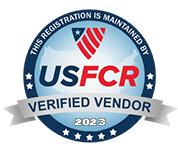How To Overcome Seasickness
Whether it’s you or someone you know, dealing with seasickness can be a paralyzing problem on board. Here are some tips on how to prevent seasickness during your time on the water, for example during one of our US sailing courses.
Remedies for Overcoming Seasickness
In order to ensure a greater percentage of your crew on deck at crucial times, have a good supply of seasick pills aboard. Make sure that anyone with a propensity to seasickness takes a pill before the weather gets rough. As for seasickness drugs, Scopolamine behind-the-ear patches, which can be obtained only with a prescription, work well. But there are side effects such as drowsiness, dry mouth, and in some cases double vision. The instructions indicate those who should not use them. The patches allow a slow release of the drug into the bloodstream, which minimize the side effects, but side effects are still there.
There’s a fairly new seasickness remedy on the market called Motion Ease. It’s an emollient oil that you rub right behind both ears. It’s not a drug and we have had great results with students taking Offshore Sailing School courses. Once you get into sailing and get used to motion aboard, seasickness usually goes away, particularly if have the opportunity to take the helm and steer the boat which we emphasize with students in our sail and power courses.
The wristbands (with a button that applies acupressure at a point between tendons on the wrist) work well for many people, offering a drug-free solution for overcoming seasickness. Medical doctors claim there’s no proof of their effectiveness, and they’re right. If you don’t get seasick when wearing them, who’s to say you would have gotten seasick without them? Our instructors have found that a combination of the wristbands and Motion Ease gives 100% relief.
Tips For Avoiding Seasickness
There is no one I know of who can’t get seasick if the conditions are right, but there are some things that can be done to reduce the possibility.
- Don’t drink liquor excessively the night before departing. The slight morning-after feeling can be many times compounded on a boat.
- Be careful to avoid greasy foods. The first sign of seasickness is indigestion and it often never gets past that point.
- Drink Coke or Pepsi. These two drinks help reduce the chances of getting sick because they contain phosphoric acid, which is an ingredient in Emetrol, a drug to control vomiting. That’s the medical explanation I received from a doctor when I asked why a Coke seems to settle the stomach. Eat Saltine crackers. They absorb the excess acidity very well. If the indigestion is really bad, take an antacid.
- Stay up on deck where the air is fresh and you can see the horizon. The worst thing is to focus on a near object that is moving around in relation to the background like making an intricate repair below decks in the forepeak of the boat. When you stay on deck you can see the horizon and it greatly helps maintain your equilibrium and orientation. Also, since the smell of diesel fuel can aggravate seasickness, fresh air helps.
- If you have a choice of berths, don’t choose one in the forward cabin. There is less pitching motion in the center of the boat and the quietest berth from the point of view of movement is often the quarter-berth, if there is one.
- Sleep on your back. This seems to support the stomach better from bouncing around, though, not being a doctor, I couldn’t tell you why.
- Keep busy on deck. Some say seasickness is completely psychological. I know of people who have gone asleep feeling well, only to wake up seasick, so I doubt that it’s all psychological. However, if you sit around worrying that you might get seasick, it’s apt to happen. Seeing and smelling others seasick doesn’t seem to have an effect on me, but it may cause others to feel sick. If you’re very busy on deck steering, or trimming and changing sails, you are less apt to feel bad, but once you do feel sick, activity tends to make it worse. You’ll feel much better if you tickle your throat over the side and get rid of it. Obviously, this has to be done on the leeward side of the boat and it’s best to have someone hold onto your belt in back, because you don’t have much control while vomiting.
- Have your ears cleaned before a long race or cruise. This has helped many people reduce their proneness to seasickness by allowing the balance mechanism in the ears to work better. I’ve never had it done myself, but I’ve heard it helps.
- Be in good physical condition. It reduces your chances of becoming seasick and also reduces its debilitating effects on you if you do.
- Steer. This even helps the crew members that have already started to feel queasy. Steering necessitates looking at the horizon (#4) and keeping busy (#7), and provides anticipation of what the next movement of the boat will be.
When you encounter very rough weather early in a distance race or long cruise, particularly early in the season or before you have had a chance to get much sailing in, your chances are higher you’ll get sick. If you have a couple of days to get your “sea legs” (this term applies to maintaining your balance and insofar as balance affects your tendency towards seasickness, it has come to apply to that also), you should have no trouble dealing with seasickness.
We hope these remedies and tips on how to prevent seasickness are helpful. Happy Sailing from Steve Colgate, founder of Offshore Sailing School!
Reprinted from “Fundamentals of Sailing, Cruising, & Racing” by Steve Colgate; published by W.W. Norton & Co.









